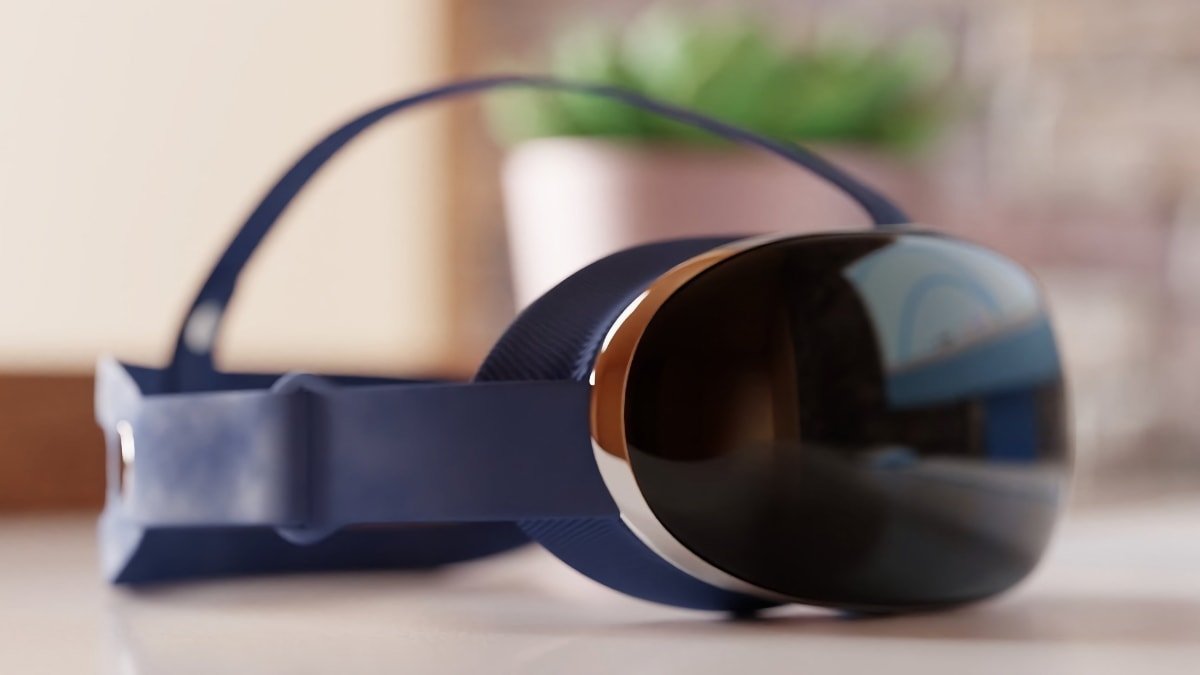Apple headset factories rumored to be in 'final sprint' with WWDC announcement expected
Apple's supply chain is rumored to be in the final mass production preparatory stages of the long-rumored Apple AR headset, with a "final push" underway to finalize techniques and assembly procedures.

A render of the possible headset from AppleInsider
A supply chain report claims that Foxconn subsidiary GIS has a production line fired up for the lens assembly for the headset. The lenses are then, in turn, provided to a company called Lixun for assembly.
Wednesday's report from the Economic Daily News also claims that volume production will start later in the second quarter, which began on April 1, and will proceed into the third quarter.
If the report is accurate, it's not clear that it means that the headsets will ship in significant volume in the wake of WWDC. Instead, early production may be for developer kits, as Apple did for the PowerPC shift to Intel, and then again from Intel to Apple Silicon.
Apple has been rumored for some time to debut -- but not necessarily ship -- the headset during the 2023 WWDC. At the same time, Apple is said to launch a software development kit and a Mac-based headset simulator at the event to help developers create new apps and services for xrOS, the supposed name for the headset's operating system.
A big focus on gaming is expected, complete with "top-tier titles" from third parties. And, to help with Mac-based productivity, the headset is rumored to be usable as an external monitor for a connected Mac.
The headset will also apparently be able to run "hundreds of thousands" of current third-party iPad apps available from the App Store. A rumor claims that developers may need to make "minimal modifications" for compatibility, but many may need "no extra work" to run.
The first-generation unit may cost as much as $3000. Apple is said to have up to three models in various stages of development.
Read on AppleInsider

A render of the possible headset from AppleInsider
A supply chain report claims that Foxconn subsidiary GIS has a production line fired up for the lens assembly for the headset. The lenses are then, in turn, provided to a company called Lixun for assembly.
Wednesday's report from the Economic Daily News also claims that volume production will start later in the second quarter, which began on April 1, and will proceed into the third quarter.
If the report is accurate, it's not clear that it means that the headsets will ship in significant volume in the wake of WWDC. Instead, early production may be for developer kits, as Apple did for the PowerPC shift to Intel, and then again from Intel to Apple Silicon.
Apple has been rumored for some time to debut -- but not necessarily ship -- the headset during the 2023 WWDC. At the same time, Apple is said to launch a software development kit and a Mac-based headset simulator at the event to help developers create new apps and services for xrOS, the supposed name for the headset's operating system.
A big focus on gaming is expected, complete with "top-tier titles" from third parties. And, to help with Mac-based productivity, the headset is rumored to be usable as an external monitor for a connected Mac.
The headset will also apparently be able to run "hundreds of thousands" of current third-party iPad apps available from the App Store. A rumor claims that developers may need to make "minimal modifications" for compatibility, but many may need "no extra work" to run.
The first-generation unit may cost as much as $3000. Apple is said to have up to three models in various stages of development.
Read on AppleInsider

Comments
I wonder if this will offer full wired VR support on Mac, if so that'd up the value of these quite a bit.
Minecraft is probably easy to support too. Games also don't need to surround the player, they can just display in a 3D box so instead of looking at a 2D screen that is flat when moving side to side, the player is looking at a 3D box with depth e.g fish tank view.
For games there would need to be a good control setup. While they can have hand tracking from the headset, something tactile would be good to have too. Typical VR controls are very bulky like the other components:
A minimal hand strap would suffice, possibly with a button or touch pad on the end for the thumb to press. This would allow extending the hand flat while keeping hold of the controller:
A normal controller has 2 analog sticks (clickable), 4 action buttons, 2 menu buttons, 4 triggers. Most of this can be replicated with a minimal touch setup. A set of VR controllers here sets it up this way:
8 separate finger presses on the touch surface give 8 buttons and there would be a touch surface/button at the thumb. The taptic engine can feel like button presses like the Magic trackpad.
For interacting with video and web content, it wouldn't need controllers, the hand tracking would be enough but the controllers would give more accurate input, especially for entering text.